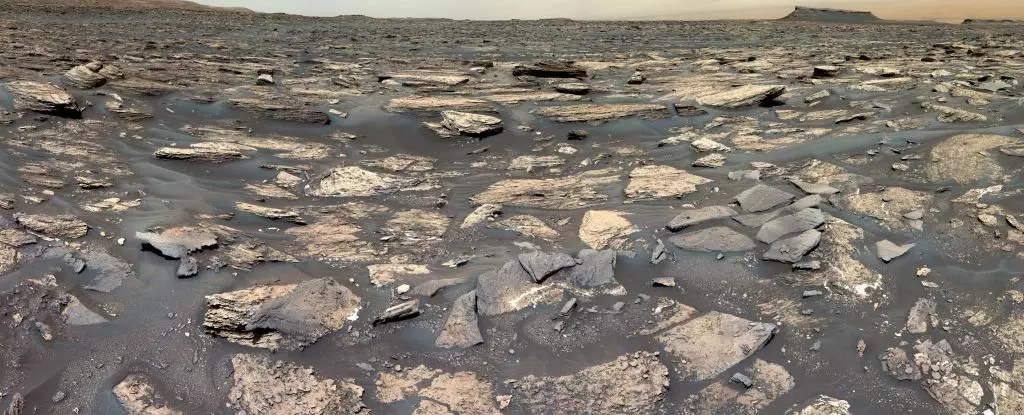In a groundbreaking discovery, the Curiosity rover has unearthed evidence that suggests Mars may have once been a habitable environment billions of years ago. By scrutinizing rocks in the ancient Gale Crater, Curiosity has detected a significant amount of manganese oxide – a mineral commonly found in Earth’s lakes. The presence of manganese oxide indicates highly oxidizing conditions, similar to those found on Earth, which could have potentially supported life in the past.
Manganese oxide is a crucial mineral for various biological processes on Earth, with microbes relying on its oxidation states for energy production. However, the discovery of manganese oxide on Mars raises questions about its origins and concentration in sedimentary rocks. The lack of present-day oxygen and living bacteria on Mars makes it challenging to explain how manganese oxide formed in quantities comparable to Earth-like environments.
Researchers, led by geochemist Patrick Gasda, utilized Curiosity’s ChemCam to analyze the composition of manganese oxide in the Gale Crater. Through their analysis, they proposed two potential mechanisms for the precipitation of manganese oxide – from lakewater or groundwater through porous sands. Both mechanisms require highly oxidizing conditions, pointing towards a scenario where manganese oxides precipitated along a lakeshore in the presence of an oxygen-rich atmosphere.
The discovery of manganese oxide in the ancient rocks of the Gale Crater provides further evidence of a long-lived and habitable lake environment on Mars. The slow formation of manganese oxide suggests a stable environment over an extended period, potentially harboring ancient life forms. While the source of oxygen remains unknown, researchers speculate that meteorite impacts in Mars’s early history could have released oxygen from surface ice deposits.
The presence of manganese oxide opens up the possibility of finding biosignatures and organics left behind by microbe-mediated oxidation in Martian rocks. The Perseverance rover, currently exploring a dried-up delta environment, could potentially uncover these traces in its travels. Researchers are optimistic about the prospect of discovering evidence of ancient life on Mars through further exploration and analysis of manganese-bearing rocks.
The findings from Curiosity’s investigation into the presence of manganese oxide on Mars shed light on the planet’s past habitability and potential for ancient life forms. By unraveling the mysteries of Martian rocks, scientists are inching closer to understanding the planet’s geological and biological history. The exploration of Mars continues to captivate researchers and the public alike, fueling curiosity about the possibility of life beyond Earth.


Leave a Reply